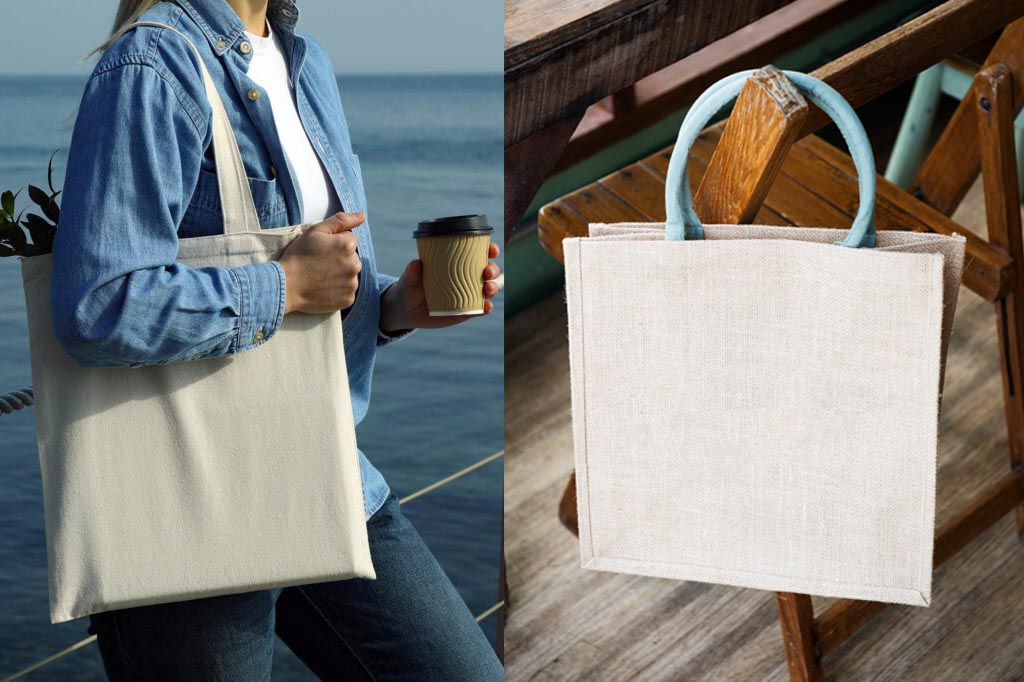In the quest for more sustainable alternatives to plastic bags, jute and canvas bags have emerged as popular choices among eco-conscious consumers. Both these options offer unique advantages, and in this blog, we will explore the differences between jute and canvas bags, helping you make an informed decision when selecting the perfect eco-friendly companion for your daily needs.
Material and Origin
Jute bags are crafted from the fibers of the jute plant, a fast-growing and renewable resource native to South Asia. The jute plant requires minimal water and pesticides, making it an environmentally friendly option. On the other hand, canvas bags are made from sturdy plain-woven cotton or linen fabric, providing strength and durability.
Strength and Durability
Canvas bags outshine jute bags in terms of strength and durability. The tight weave and heavier fabric of canvas make it ideal for carrying heavier items, enduring rough handling, and withstanding regular use. Jute bags, while sturdy in their own right, are better suited for lighter loads and gentler handling.
Eco-Friendliness
When it comes to eco-friendliness, both jute and canvas bags have their merits. Jute is a champion in sustainability as it grows rapidly, requires fewer resources, and is biodegradable. Canvas, though not as environmentally friendly as jute, is still a better alternative to plastic bags, especially if made from organic or sustainably sourced cotton.
Appearance and Style
Jute bags have a natural, rustic charm with their coarse texture and earthy tones. Their distinct appearance makes them a popular choice for casual outings, farmers’ markets, and trendy boutiques. Canvas bags, on the other hand, offer a more refined look with a smoother texture and a wider range of colors and patterns. They can easily complement both casual and formal occasions.
Cost
Jute bags win the cost battle, as they are generally more affordable than canvas bags. The lower cost of jute as a raw material contributes to this advantage, making jute bags an economical and eco-friendly choice for budget-conscious consumers.
Versatility
Canvas bags are known for their versatility, making them suitable for a wide range of uses. From carrying groceries and books to serving as beach bags or even as blank canvases for artists, canvas bags can adapt to various roles. Jute bags are more limited in their usage, primarily excelling in shopping bags, gift bags, and decorative purposes.
Care and Maintenance
Both jute and canvas bags are relatively easy to maintain. Spot cleaning and hand washing with mild detergent are sufficient for regular care. Canvas bags, given their sturdier nature, may handle washing and cleaning slightly better than jute bags.
In the battle of jute vs. canvas bags, there’s no definitive winner as it depends on your specific needs and preferences. Jute bags offer an eco-friendly and budget-friendly option with a rustic appeal, while canvas bags provide strength, durability, and versatility for a wider range of uses. Regardless of your choice, both jute and canvas bags contribute to reducing plastic waste and environmental impact. So, the next time you’re looking for a reliable eco-friendly companion, consider the unique attributes of jute and canvas bags and make an eco-conscious decision that aligns with your lifestyle. Happy bag shopping!



